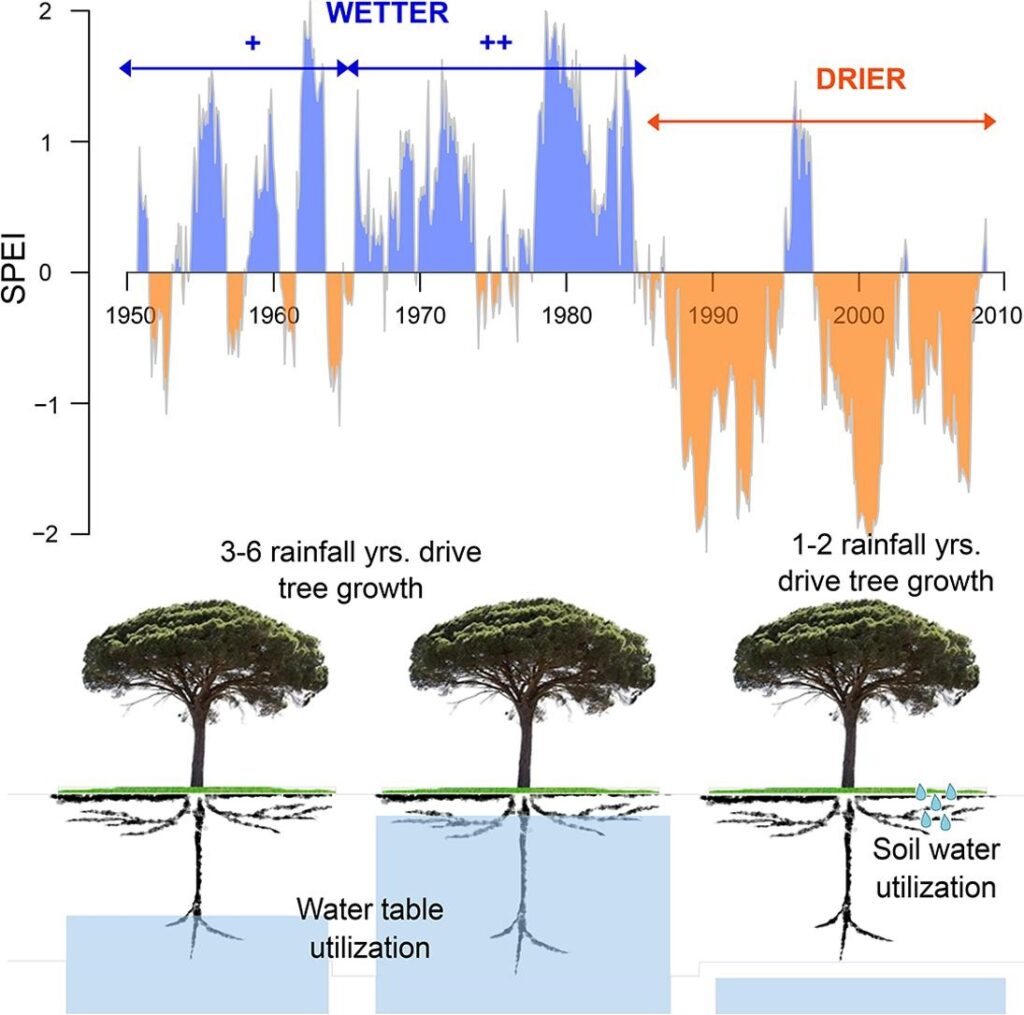Highlights
- We tested 3500 climate-growth correlations, comparing five standardization methods.
- Standard dendroclimatological methods may misinterpret tree responses to climate.
- Productivity and survival of Pinus pinea is driven by consecutive years of rainfall.
- Preserving high and low-frequency signals identify trees’ species conservation needs.
- Higher drought stress may indicate a loss in contact with the declining water table.
Abstract
Graphical abstract

Identifying the key climatic parameters controlling a tree species’ growth in a given environment can improve our understanding of the species’ adaptability to climate change. However, this can be significantly affected by the detection and analytical methodologies used, at least for water-limited ecosystems. To address this issue, we tested together for the first time the five key methods widely applied for detecting climatic drivers of tree growth. The test was applied on the growth dynamics of Pinus pinea L. (the last ca. 130 years) and for evaluating its climatic sensitivity (the last ca. 60 years), under contrasting climatic conditions, from sites in Italy and Greece. As predictors, we selected a high number of seasonal, annual, and multi-annual climate integration periods (626 variables in total for precipitation and SPEI) through running correlation analysis. Methods that retain low-frequency variability and persistence of past climatic signals in radial growth (ABD, RCS, and raw BAI) revealed that long-term precipitation accumulated over 3–6 years was the key driver for P. pinea growth in the wettest sites. These signals probably appeared because of the cumulative effects of past years’ rainfall in determining water table levels. They would have been missed if low-frequency climate and growth variability were not considered, how it happens using standardized BAI and TRW. In the driest site, productivity was low and explained by 1–2 years precipitation signals, suggesting that mostly moisture stored in topsoil from more recent rainfall sustained P. pinea growth, a typical shallow-rooted species. Thus, the loss in root contact with the declining water table may explain the higher vulnerability to drought stress at its dry-end distribution range, particularly under low precipitation. A further drop in water table levels, driven by global warming, will most likely increase such vulnerability. Hence, conservation efforts will require maintaining a stable water table, prohibiting groundwater overexploitation at P. pinea habitats. Reducing competition from other deeper rooted tree species, better adapted to drought and fire, may further benefit the species’ conservation status.
Mazza, G., & Sarris, D. (2021). Identifying the full spectrum of climatic signals controlling a tree species’ growth and adaptation to climate change. Ecological Indicators, 130, 108109. https://doi.org/10.1016/j.ecolind.2021.108109
